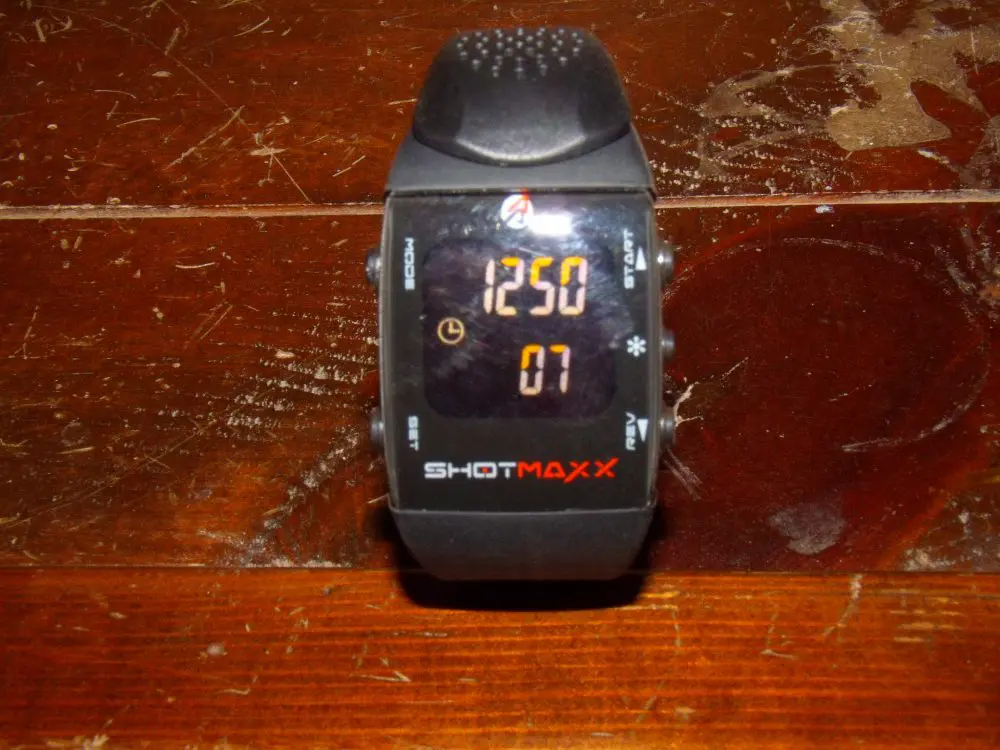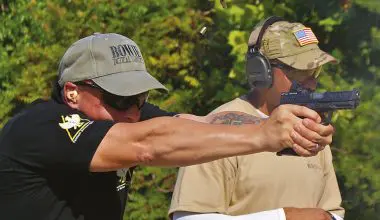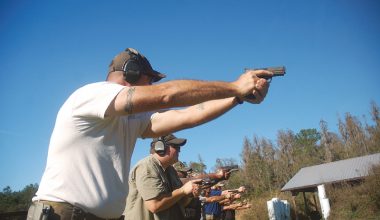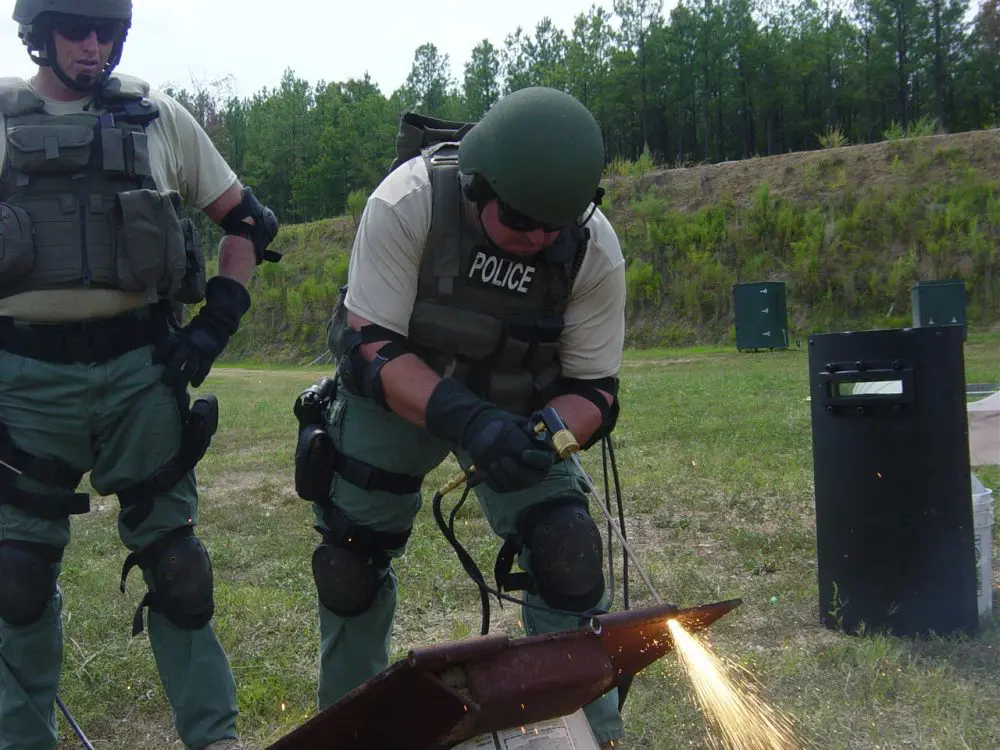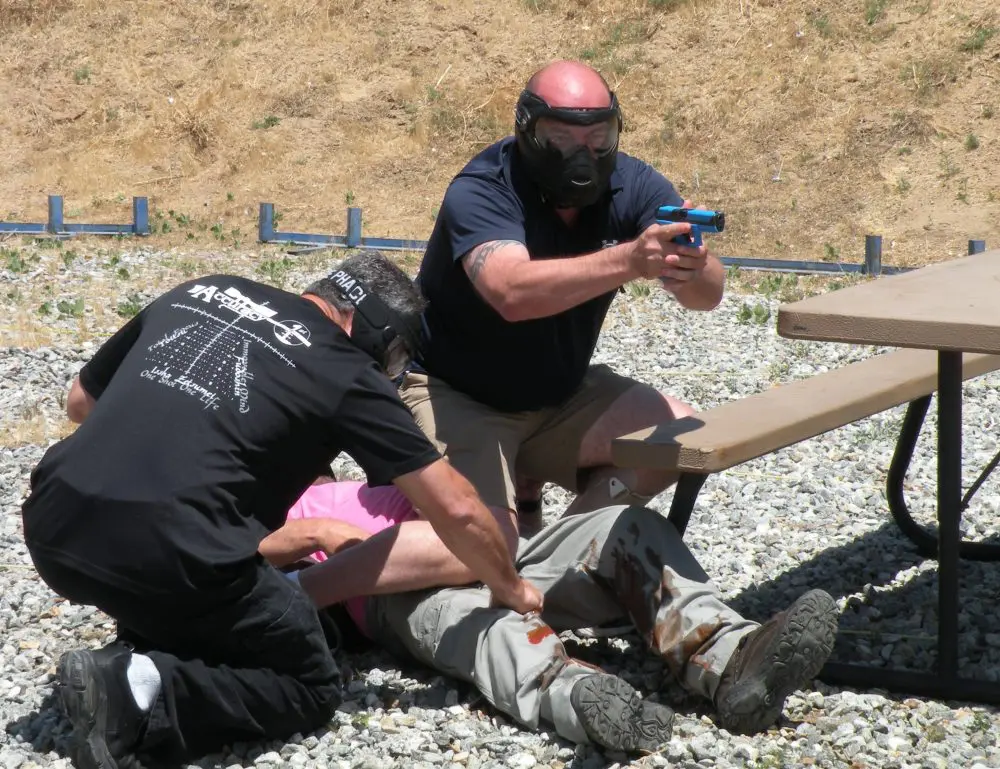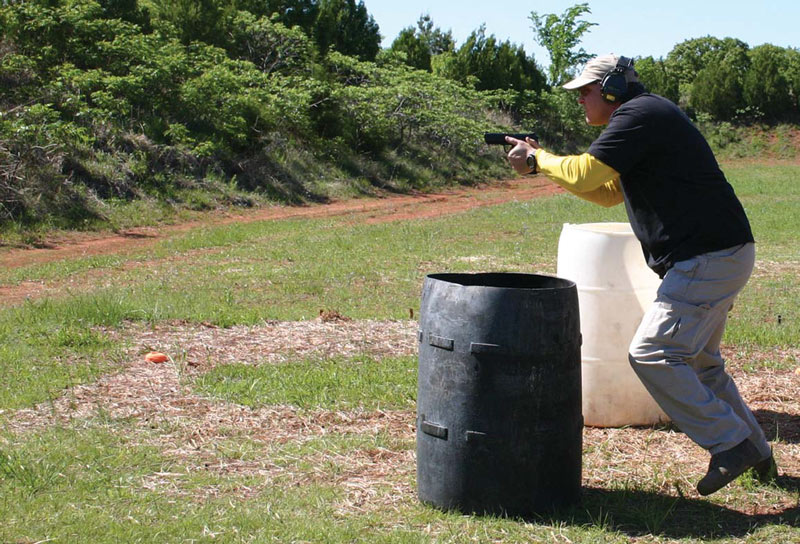
And one thing that sets S.W.A.T. Magazine apart is that we profile more trainers and training options than any other publication. These include world-renowned instructors and companies, as well as those who are not as well known but nonetheless deserve recognition.
One such trainer is Todd Louis Green.
Todd has worked in the firearms industry in one capacity or another for the past 13 years and has taught the entire time. Both Beretta and SIG hired him to be a competitive shooter as well as to work as a project manager responsible for agency customers and contracts. In that capacity he was involved with various military and law enforcement projects, while continuing his training at well-known schools such as Rogers Shooting School and Blackwater, both of which he attended several times.
He also studied with such notable instructors as Ken Hackathorn, Ernest Langdon, Scott Warren, Larry Vickers, and retired New Jersey policeman Rich Verdi. Todd taught with Verdi at IALEFI conferences and credits him with providing the genesis for Todd’s two-day “Aim Fast, Hit Fast” handgun class.
Table of Contents
AIM FAST, HIT FAST
The handgun skills presented in this class are geared toward making people faster, more accurate and more competent shooters. It has applicability to both the defensive and competitive realms. Though the class is not a tactical class per se, Todd freely offers his observations and advice when he notices tactical habits that he feels are sub-par.
Todd generally limits the class to about a dozen people, and then splits them into two relays to allow him to spend a lot of time observing and coaching individual shooters. Our class was almost evenly divided between Glock and S&W M&P shooters, with one student using a customized 1911 for most of his shooting.
My S&W M&P9 sported a Bowie Tactical trigger job to bring its trigger into 1911 range, and an extractor from Apex Tactical that did away with some occasional extraction issues I had previously experienced.
I encountered a single malfunction out of about 1,500 rounds of Black Hills Ammo that I fired—a failure to detonate attributable to a striker spring needing replacement given the number of rounds that I have through the gun.
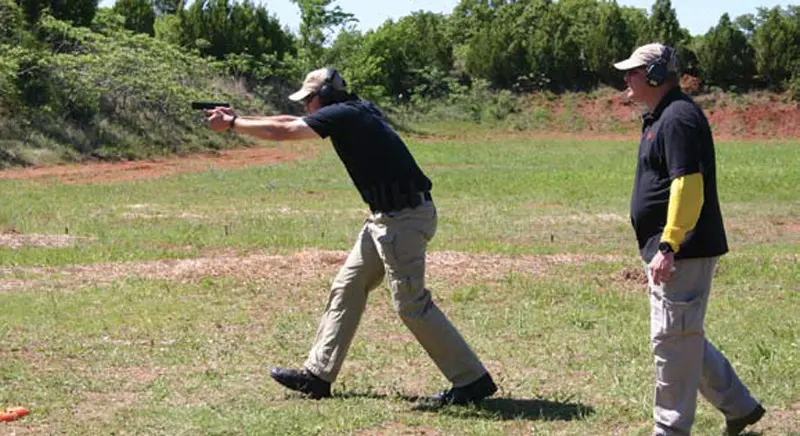
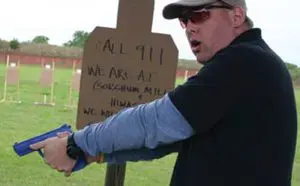
COURSE GOAL
The goal of the class was to help students reach the level of performance where they could accomplish tasks without having to think about all the little steps involved. Todd quoted Ken Hackathorn in saying that you will not do anything under stress that you are not confident in, but will only do what you can perform without thinking about. Todd also mentioned that many of the things we would learn in class, though they represent superior ways of running the gun, can initially slow students down and make them shoot worse until they have internalized the new methods.
Todd recognizes that some people need to be prompted to shoot faster, while others need to slow down. His goal as an instructor is to push people as far as he can without having them crash and burn, making sure that they are always operating their handgun in a safe and efficient manner.
While the course was a blend of speed and accuracy, Todd pointed out that the average untrained person can fire as many as four shots per second if they are pulling the trigger wildly. “Every 1/4 second that you can take off a person’s shooting can be one less shot that an attacker can fire.”
FAST
True to its name, the class started off at a fast pace. Immediately after the safety briefing, the class shot a diagnostic test that consisted of trying to shoot their best group at an index card at a range of three yards.
If someone does not possess the basic skills, Todd lets them know that they are welcome to stay, but stresses that he will not slow the class down for them. He makes it clear before you sign up that this class is for experienced shooters who have already established a skill baseline.
Once Todd confirmed that everyone had the requisite shooting skills, it was time to run his FAST test. FAST is an acronym for fundamentals, accuracy, and speed test. The test is conducted at seven yards and begins with a draw from concealment to fire two shots at a 3” x 5” index card, execute a slidelock reload, and then fire four shots at an 8” circle about a foot below the card.
Todd originally set this up as a skills assessment and later added the timed element. Each miss on the index card adds two seconds to the completion time, while each miss on the circle adds one second. Anyone who completes the test in less than five seconds is classified as an expert; less than seven seconds qualifies as advanced; less than ten seconds is intermediate, while any time above this is considered basic.
Less than 10% of all students who take his class qualify as advanced, and it is not unusual for no students in a class to achieve this rating. The test is typically offered four times during his class: once at the beginning of each day and once at the end. Only a handful of people have earned his expert rating, with most of them being professional shooters.
Todd created this course of fire because it is easy to set up, fast to run, and assesses a number of skills, including the ability to:
- Draw a handgun from concealment.
- Quickly engage a relatively small target at speed.
- Control recoil between shots.
- Smoothly execute a speed reload.
- Immediately switch gears from a high-precision target to a high-probability target that needs to be engaged at a faster rate to make the time limits.
The FAST drill requires a higher degree of precision to get the two hits on the index card, then a greater degree of speed to manage four hits on the eight-inch circle. The shooter must be able to achieve both, employing the right mix of speed and accuracy to successfully complete the drill in a decent time limit.
Todd demonstrated the drill shooting an HK45 from an appendix-carry concealment holster covered by an untucked shirt, and still managed to break the fivesecond barrier. This was astoundingly fast, especially since he was drawing from relatively deep concealment.
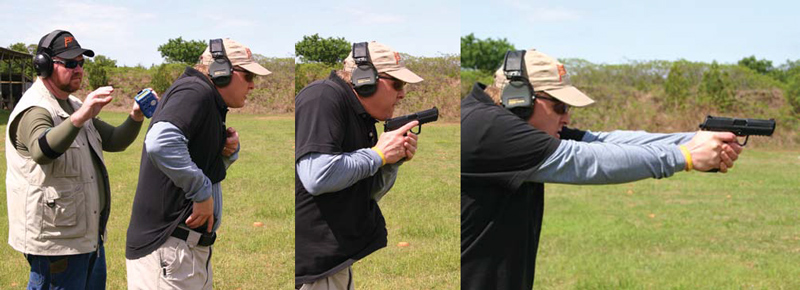
LECTURE TOPICS
Most of the instruction was given on the firing line as the class progressed, however, Todd did deliver a short lecture after getting a feel for the students’ skill level.
Stance
The first thing Todd discussed was stance. He advised us not to get too wedded to a particular stance because under stress, elements such as foot placement are not a choice. Todd considers the Modified Isosceles stance to be the most natural stance to assume under stress, as it is similar to what the body wants to do in those circumstances, as evidenced by dash-cam footage and force-on-force training.
Whatever stance you find yourself in, Todd stressed the importance of keeping your knees bent and leaning forward at the waist—especially if you shoot a gun that has a fair amount of recoil. Shoulders should be squared to the target because that is what people do naturally under stress, since it is an evolutionary response.
Grip
From there Todd addressed proper grip. There are tiny nuances in grip that have a huge impact on how well you shoot. Todd is an advocate of the thumbs-forward grip, which places the support thumb far forward along the frame, with the dominant thumb on top of it and farther back. He emphasized getting a firm hold on the gun in the holster as you grip the gun to draw, as well as when your hands are brought together in a two-handed grip in front of you before the gun is pressed out. This underscores the importance of a correct drawstroke as well.
Todd demonstrated that if you have a firm enough grip, it can nullify some of a bad trigger pull. This is significant, since jerking or incorrectly pulling the trigger is a greater source of inaccuracy than sighting issues.
While some instructors advocate a 60/40 grip on the gun, with the support hand exerting 60% pressure, Todd explained that this is difficult to measure. He suggested a simpler approach in which you grip the handgun as hard as you can without making it shake. Todd pointed out that if you feel your grip moving around when you shoot, or find yourself readjusting it, it’s a sure sign that your grip is too loose. In many cases, Todd adjusted or changed students’ grips.
Drawstroke
Todd gave in-depth coverage of the drawstroke, both from an exposed holster as well as from concealment. He advocates a movement that brings the hand to the gun in a manner that would work whether operating from concealment or in the open. Depending upon your method of concealment, adjustments will have to be made. But essentially the hand should slide smoothly across the body, moving aside the concealment to achieve a correct grip on the gun so that no time or motion is wasted in clawing away cover garments or swinging the hand past the holstered gun.
In thrusting the gun toward the target, Todd angles the slide slightly upward, leveling it out as it makes its way to full extension. At this very slight angle, the front sight is visible above the rear sights, making it easier to pick up as the gun is extended. This requires regular practice to execute smoothly, so that the gun does not whip down at full extension.
Sights
Picking up the sights as soon as possible when the gun is brought to eye level is a key element to shooting fast and accurately, as is tracking the sights during recoil so you can get your sights back on target more quickly after each shot.
An important part of the class was teaching students how to read their sights properly to get the quickest possible sight verification and the fastest possible aimed shot. Learning how much sight alignment is needed to hit a target depending on its size, the distance and time constraints was also important. Todd ran us through several drills that varied target sizes, distances and shooting tempo to drive home this important point.
DRILLS, DRILLS, DRILLS
While speed is one of the two main criteria, it is wasted if the action is not carried out correctly. In some cases, Todd slowed down students who were doing something incorrectly. “Only do fast what you have mastered,” he stressed. Otherwise you might be building bad habits.
Everything is practice for something else, Todd reminded us. Thus any accuracy drill that involves a reload becomes a reload drill. Todd believes that every time you perform something incorrectly while learning, such as a reload, you have canceled out your previous five correct repetitions.
As the day progressed, we ran through a wide variety of shooting drills designed to develop or enhance the mechanics and skills that Todd teaches. We also covered emergency or speed reloads, with an emphasis on bringing elbows back to touch the body to provide consistency and stability. Todd reminded us to be sure to have a finger along the front of the magazine to better index and make it easier to slip it into the gun’s magazine well.
At the end of Training Day One, we reshot the FAST test, and no one achieved an advanced score. Todd attributed this to people shooting faster than their skill level, especially since there were some people who managed to shoot an advanced score in an informal shooting session that we had the day before class started.
Training Day Two began with some warm-up drills and then shooting the FAST test. From there we moved on to engaging multiple targets, often alternating between the head zone on one target and the center zone on the other. This forced students to alternate between shooting faster at the larger targets, but slowing down to engage smaller ones.
We later progressed to shooting both strong handed and weak handed. Onehanded shooting, especially with our non-dominant hand, required more concentration on a smooth trigger pull as well as more effort in front-sight tracking.
The next step was shooting on the move. Todd believes that some instructors unnecessarily complicate shooting on the move. He feels it is a waste of time to try to teach people to walk or move differently than they have been doing all of their lives. Shooters need to concentrate on shooting, not walking in a different manner than they are accustomed to. We also shot on the move while circling between barrels.
We ended TD2 with a repeat of the FAST drill, with only one student achieving an advanced score, the only such rating shot during the entire course.
TAKEAWAYS
Over the course of the two days, Todd provided enough astute observations and advice about firearms and accessories, their application and training to easily fill an instructional manual. He has developed an excellent class in terms of instruction, training, introducing and reinforcing key skills, with plenty of handson attention under his watchful eye.
Todd pointed out that if you are regularly getting 100% hits in the center circle of an IPSC target, you are not shooting fast enough—and you can’t get fast without pushing yourself, which sometimes entails missing. I for one left Todd’s course shooting both more quickly and more accurately.
